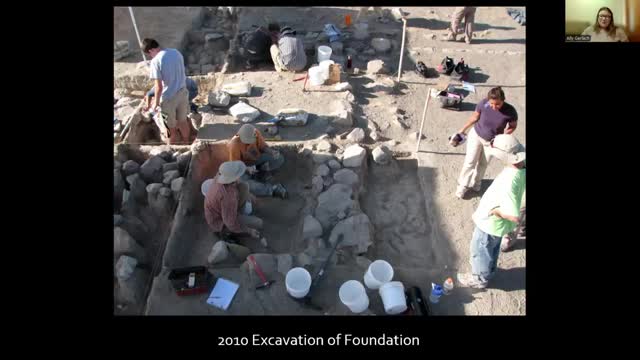Community Collaboration Breathes Life into Archaeological Exhibit
July 26, 2024 | Utah Libraries and History, State Agencies, Organizations, Utah Executive Branch, Utah

This article was created by AI summarizing key points discussed. AI makes mistakes, so for full details and context, please refer to the video of the full meeting. Please report any errors so we can fix them. Report an error »

In a recent presentation at the University of Idaho, a graduate student highlighted the importance of public archaeology through a collaborative project with the OSEPa descendant community. The student, who shifted focus to public archaeology during their studies, emphasized the need for archaeologists to engage with the general public and stakeholders to enhance understanding and appreciation of historical narratives.
The project involved creating an exhibit for the OSEPa community, particularly for their annual Memorial Day celebration. This collaboration aimed to ensure that the narratives presented were reflective of the community's history and perspectives. The student worked closely with the Llosepa and Mohoi family descendant communities, recognizing their vested interest in the project and the significance of their stories.
Public archaeology was defined as a means to connect the past with the present, allowing communities to participate in the storytelling process. The student articulated three key facets of public archaeology: ethical obligations to the public, collaboration with stakeholder groups, and the relevance of archaeological findings to contemporary issues. By prioritizing the voices of the Mohoi family in the exhibit's design, the student aimed to respect their agency and privacy while fostering a multivocal narrative.
The presentation underscored the role of museums as vital partners in public archaeology, as they possess the resources to effectively communicate archaeological findings to the public. The collaboration with the Museum of Pupils and Cultures in Provo, Utah, was highlighted as a crucial aspect of the project, allowing for the display of artifacts that had been excavated years prior.
Ultimately, the student expressed hope that the exhibit would not only preserve local histories but also increase public interest in archaeology, making the past more accessible and relatable through collaborative storytelling.
The project involved creating an exhibit for the OSEPa community, particularly for their annual Memorial Day celebration. This collaboration aimed to ensure that the narratives presented were reflective of the community's history and perspectives. The student worked closely with the Llosepa and Mohoi family descendant communities, recognizing their vested interest in the project and the significance of their stories.
Public archaeology was defined as a means to connect the past with the present, allowing communities to participate in the storytelling process. The student articulated three key facets of public archaeology: ethical obligations to the public, collaboration with stakeholder groups, and the relevance of archaeological findings to contemporary issues. By prioritizing the voices of the Mohoi family in the exhibit's design, the student aimed to respect their agency and privacy while fostering a multivocal narrative.
The presentation underscored the role of museums as vital partners in public archaeology, as they possess the resources to effectively communicate archaeological findings to the public. The collaboration with the Museum of Pupils and Cultures in Provo, Utah, was highlighted as a crucial aspect of the project, allowing for the display of artifacts that had been excavated years prior.
Ultimately, the student expressed hope that the exhibit would not only preserve local histories but also increase public interest in archaeology, making the past more accessible and relatable through collaborative storytelling.
View full meeting
This article is based on a recent meeting—watch the full video and explore the complete transcript for deeper insights into the discussion.
View full meeting

